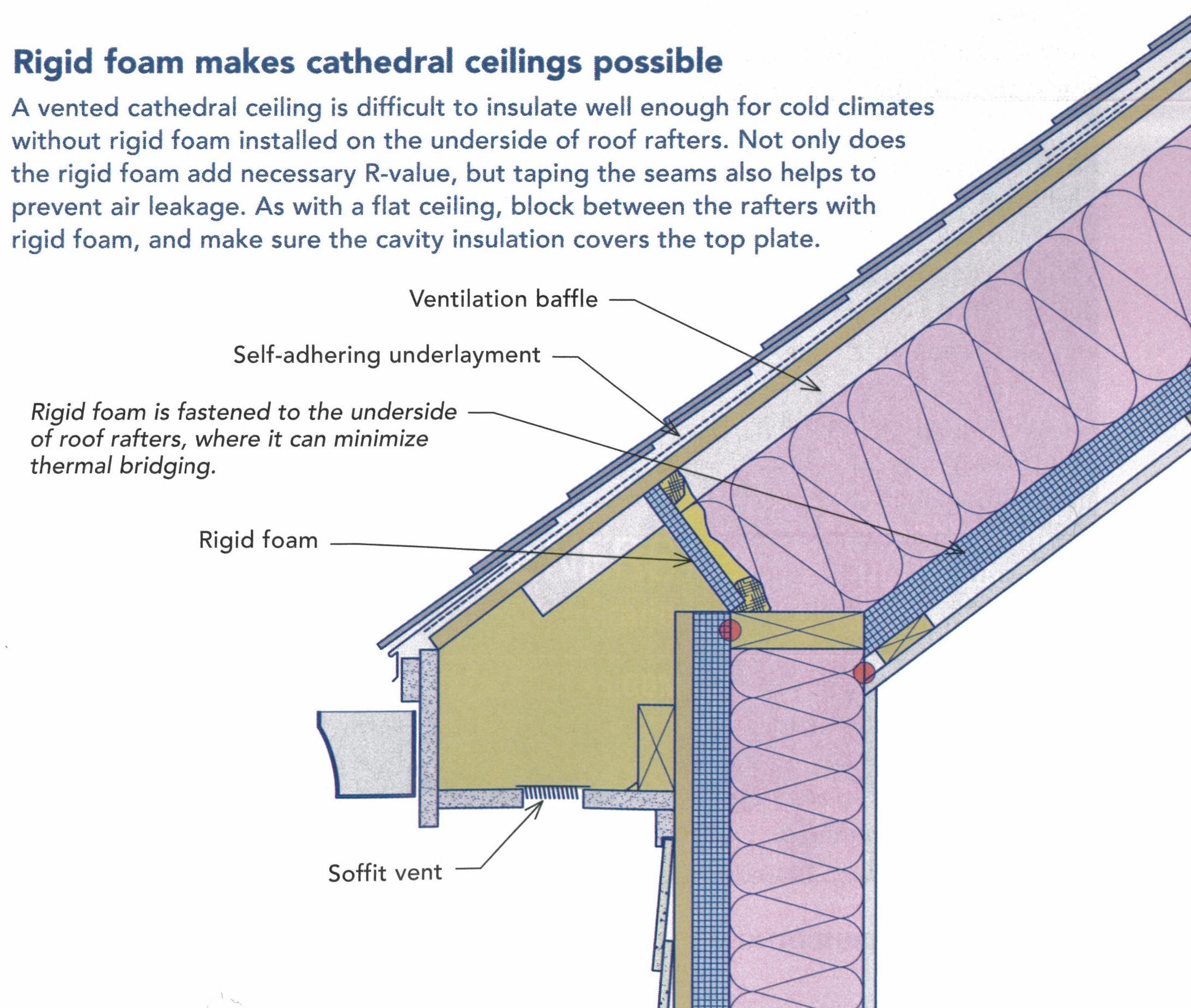Depending on where you live and the part of your home you re insulating walls crawlspace attic etc you ll need a different r value.
Roof insulation vaulted ceiling unvented.
Nail 1 furring along every rafter side against the roof deck.
In the knee wall area the insulation is in the floor and on the back of the knee wall.
These assemblies are created by eliminating ventilation openings and moving the thermal moisture and air control boundaries to the plane of the roof deck.
The insulation must be in direct contact with the sheathing.
The garage is 12x20 and has about a 27 degree pitch in the roof with 2x6s as rafters.
Four options for building an unvented roof assembly.
Unvented roof assemblies such as conditioned attics and unvented cathedral ceilings are becoming common in north american construction.
Cut and insert 1 or thicker high r foam insulation sheets r 8 per inch against the furring giving a 1 or greater air path between the insulation and the roof deck under the cathedral ceiling.
Polyiso provides one of the highest r values per inch of any rigid insulation r 6 at 1 inch.
If you don t want to use sips or nailbase there are four basic approaches.
One major benefit of an unvented attic is that mechanical equipment and ducts located in traditional vented attics are now within the thermal envelope which minimizes heat loss to the outside.
Attics and cathedral vaulted ceilings johns manville aptmfoil faced insulation sheathing board is an excellent choice for insulating attics and cathedral vaulted ceilings.
In this post we will show that while the propink unvented insulation system may provide a safe roof in zones 2b 3b if we instead combine dense fiberglass insulation batts or densepacked with intello smart vapor retarder and airtight membrane we can make safe and robust unvented roofs in climate zone 6.
In an unvented attic penetrations through the ceiling directly below the attic do not need to be air sealed.
I m in the midst of re doing our garage.
I m looking for some suggestions in terms of insulating.
The space will be used as a nice woodshop mancave.
Typical recommendations for exterior walls are r 13 to r 23 while r 30 r 38 and r 49 are common for ceilings and attic spaces.
This is because the top floor ceiling is no longer the air barrier for the house the spray foam at the roof deck underside in the attic is the air barrier.
Show activity on this post.





























